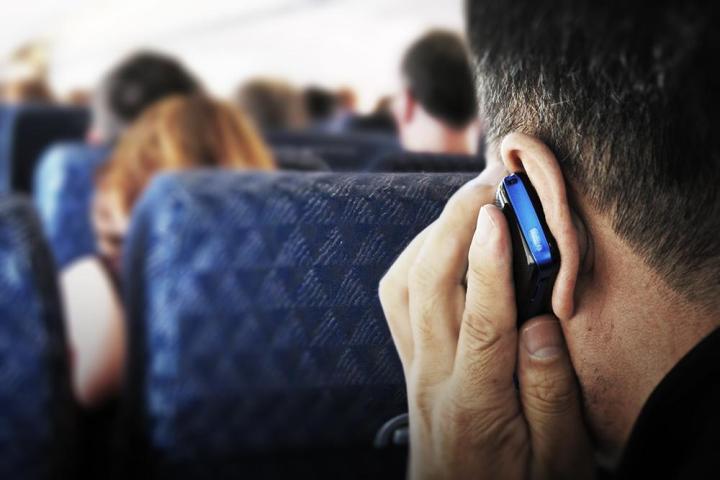
Anyone who’s ever sat near an infant during a long flight recoiled in horror last week after the Federal Communications Commission revealed its plans to consider lifting the 22-year-old ban on inflight cell phone calls. Great, we all thought, now some D-bag will inevitably sit right next to me while he yammers away, forcing me to spend the entire flight fantasizing about smothering him to death with my new Brookstone neck pillow
In other words, listening to other people talk on the phone is painfully obnoxious. Which is part of the reason why, according to an FAA survey from 2012, more than 50 percent of airline passengers do not want cell phone calls permitted on their flights. It’s also likely why the airlines, which have unilaterally prevented passengers from making cell phone calls using on-board Wi-Fi signals, may decide not to allow any type of inflight cell calls, even if the FCC eliminates its ban.
Despite our distaste for inconsiderate jerks, however, airlines banning cell phone calls on flights simply to stop rude people from talking near us is extreme – and entirely unnecessary. Society has a way of sorting out impolite behavior without imposing institutionalized rules. It’s called etiquette, and devising proper decorum for inflight calls is the only rulemaking we need.
This is not a new concept, especially as far as cell phones are concerned. Most of us don’t make long calls on quiet train cars, or blather on our smartphones at funerals. We put our devices down at family dinners. And, when we need to make a call in these situations, we make them as quick and silent as possible.
Society has a way of sorting out rude behavior without imposing institutionalized rules. It’s called etiquette.
In addition to establishing some unwritten rules of conduct, there are ways to stop people from making annoying inflight calls that don’t involve banning the activity outright. For example, airlines can adopt specific rules that require callers to end their chats if a flight attendant asks them to. And wireless providers can charge exorbitant rates for mid-air service, coercing people to only take the most urgent calls, and to keep their talk times to a minimum – something that’s likely to be the case anyway, given wireless companies’ penchant for relieving customers’ of their cash.
Most people don’t want to be the A-hole everyone around them hates. And through a combination of general etiquette and light-handed official policy, we can force those who fail to grasp common decency to behave as we would like them to behave. Is this a foolproof plan? Of course not – tech users do stupid, obnoxious stuff all the time, even when there are strict laws in place. (Just look at the statistics on texting while driving.) But that’s not a reason to deny the rest of us a service that could be extremely useful.
Considering that humanity has figured out both the miracle of flight and the wonder of wireless global communications, I have full confidence we can sort out a way to combine the two without it all going to hell. We’ve solved the problem of rude technology users before, by making it unbearably uncomfortable to act like a punk. And as new gadgets arrive on the scene – I’m looking at you, Google Glass – we’ll have to do it again.
So, airlines, let us have our inflight cell phone calls. The people who abuse the privilege will have an earful from their fellow passengers soon enough, trust us.
Editors' Recommendations
- Don’t buy a Galaxy S24 Ultra or iPhone 15 Pro Max. Do this instead
- No, you really don’t need the iPhone 15
- No, you really don’t need Google Assistant on your smartwatch
- The iPhone 15 may finally get reverse wireless charging — but I don’t want it
- I don’t want to see 5G on any phone in 2023


